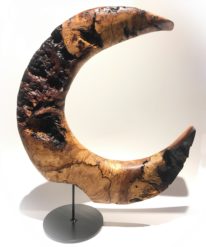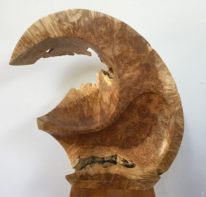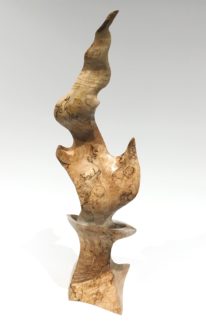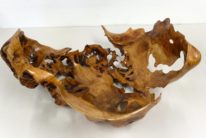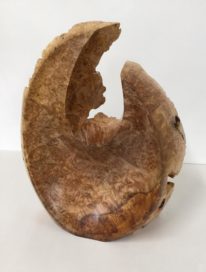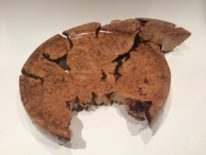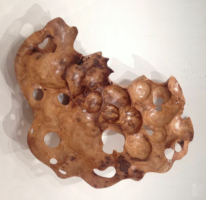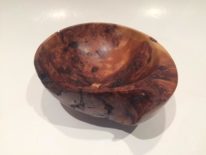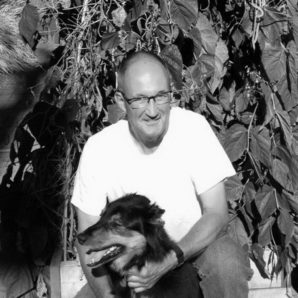
Edmundson, Bruce
I was raised in Victoria, graduating from Oak Bay High. I put myself through University planting trees and working on the carnival. I say with some confidence that I am a candy floss and candy apple artiste, with scars to prove it. I travelled extensively in Mexico and Central America, while attending the Instituto Allende in San Miguel d’Allende, Mexico and the University of Victoria. My formal education culminated in a Master’s in Fine Arts from UBC, in Creative Writing. In 1987, Oberon Press published a collection of my short stories, Two Voices.
Read more
I began wood carving in the early 1990’s while working in the forest industry doing timber development and silviculture work. Interest in high quality wood was a natural development of working in the B.C. forests. An especial interest was the locally exotic or unusual. The natural result is burls. These abnormal growths found on most trees demonstrate – to the extreme – the characteristics that people cherish in wood.
I did my first carvings while living in Clearwater, experimenting with species and carving methods. As I got older, I entered public service, with the Ministry Forests, and came back to Victoria with a position with the Office of the Ombudsperson, work that I am very proud of. A career in public service put the carving interest on the side line until I retired.
During my public service career, I carried several burls from place to place, and collected others. Now retired, I had this eclectic stock of wood and began carving again. Initially, there was an extreme learning curve. I experimented with tools, species, and methods. Burl wood is extremely dense and hard, in some cases very brittle, and this is also what makes them so beautiful.
Eventually I came to the modern carbide tungsten carving disc, attached to an angle grinder, and various other grinding tools, some made for the metal work industry and car remodelling business.
My process now is to burl hunt, going out to various small mills on Vancouver Island and pestering them to save burls from the milling process, to let them dry and to then sell them to me for a reasonable price. Then, I gear up with all the protective stuff, and using a very powerful pressure washer I blast off the bark, creating an unholy mess on our patio, frightening the cats and intriguing the neighbours. The wood is so dense, so hard, this doesn’t harm it at all. Then I look at it and ponder. I draw on it with waxed crayons and then sand that off. Then I pencil sketch on it, then I let it sit and stare at me in my shop for a while. Finally, I use colored marker to set my lines.
The usual first carving step is to cut with a reciprocating saw using a cuts-all blade that will cut through steel rods, creating a rough-hewn shape. Then I go at it with a carving disc. Dust control is a big issue. I create barrels of sawdust and chips. The carving discs get more sophisticated in texture, and then I begin sanding. I use specialized random orbit sanding tools, and other various sanding implements. Once down to the texture I want, I enter the final stage of finishing with either tung oil or shellac. – Bruce Edmundson
I have learned that to experiment and take risks is to court success. I want to express the natural splendour of the wood while enhancing it with the human touch. I want it to be unique, the hand of one person enabling nature’s inherent strengths and beauty. I try to do that by testing both the limits of my skills and the assets of the nature I am working on.
The Avenue Gallery was the first gallery to support me and my work. Their respectful, personal and considerate support has enabled my growth and engagement as a local sculptor. My local source material – Big Leaf Maple – is a much loved medium for many professions and, without the support of The Avenue Gallery, I would not have been able to introduce it as a sculptural medium to collectors who now have it in their homes across North America. – Bruce Edmundson

